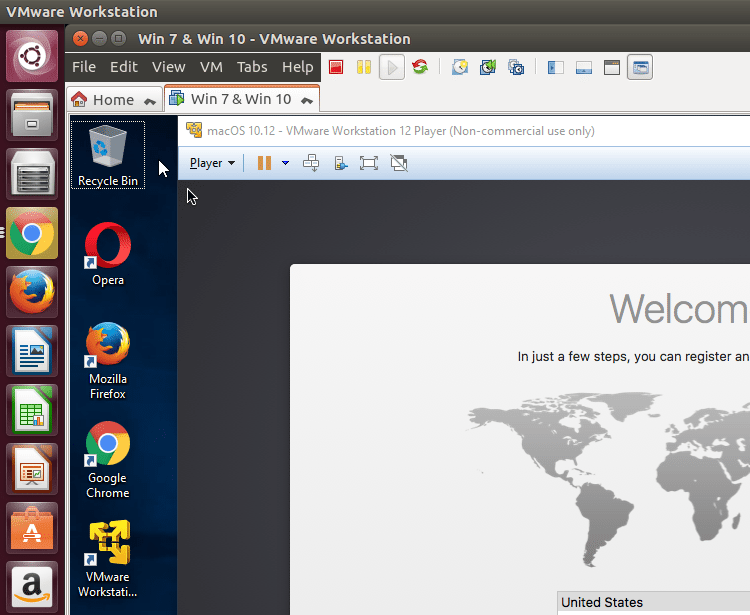
- #Install osx vmware player mac os x
- #Install osx vmware player mac os
- #Install osx vmware player install
Perhaps they can create a standalone booter later, but for now this works. Leaving it in the drive is really not a problem as it boots up so quickly.
#Install osx vmware player mac os
The third issue is that you will need to continually leave the darwin_snow.iso image in the drive all of the time to boot up Mac OS X. These issues are annoying, but that’s why this is ‘experimental’.

If you see this, you will need to reboot and try again. The second behavior is that it may get past the grey screen, but then Finder never appears and you see a forever spinning cursor. If it never progresses beyond this grey screen, then you will need to reboot and try again. The first behavior is that you get to the Apple Logo screen with the spinning lines. There are two behaviors you should watch for. When you reboot the first time, the system may or may not boot up.
#Install osx vmware player mac os x
So you don’t need to format it.īooting issues with VMWare Player and Mac OS X Note the hard drive given in this Snowy_VM archive is ‘ready to go’.
#Install osx vmware player install
Once the install begins, you are now installing Mac OS X. The system should recognize the disk change and begin to boot the media in about 10 seconds. Check the box next to ‘Connected’ at the top of the window and click ‘OK’ at the bottom. Locate the Snow Leopard media on your hard drive and click ‘OK’ to accept it. At the bottom of the active VM Window, right click the CDROM icon which may now be greyed out (disconnected) and choose ‘Settings’. So, I will assume you are using an ISO image here. I recommend using an ISO media to install. Once the machine has started and the system begins searching for a CDROM (read the text on the screen), you will need to change the CDROM to the Mac OS X Snow Leopard media. Now click the on the CDROM device and under ‘Connection’ change it to ‘Use ISO image’ and browse to and select the darwin_snow.iso image inside the Snowy_VM directory’.

Choose the ‘Mac OS X Server 10.6 (experimental)’ imported machine and choose ‘Edit virtual machine settings’ on the bottom right of the window. From here, you will need to modify the settings for the CDROM device under this machine. Once opened, it will appear as ‘Mac OS X Server 10.6 (experimental)’ in the VMWare Player selection panel. vmx file mentioned just above and open it. To begin, inside VMWare Player, select File->Open a Virtual Machine. If you absolutely feel you want to reinvent, then I’ll leave that for you to determine what’s necessary. So, use what’s given rather than trying to reinvent the wheel. It’s far simpler to use their existing template than trying to figure out all the proper VMWare Player settings. Note, you’ll need to use this template to get the install going. vmx file without the underscore at the beginning. Inside the Mac OS X Server*.vmwarevm directory, you’ll see it contains two. You will see that the extracted ‘Snowy_VM’ folder contains several files besides just the EFI media. Inside the Empire EFI 1.3.2 archive, you will see the following files: I’ll explain the issues, however, after the install steps.

Installing Mac OS X on VMWare Player is a pretty simple install, but note that there are some important issues that aren’t yet resolved.


 0 kommentar(er)
0 kommentar(er)
